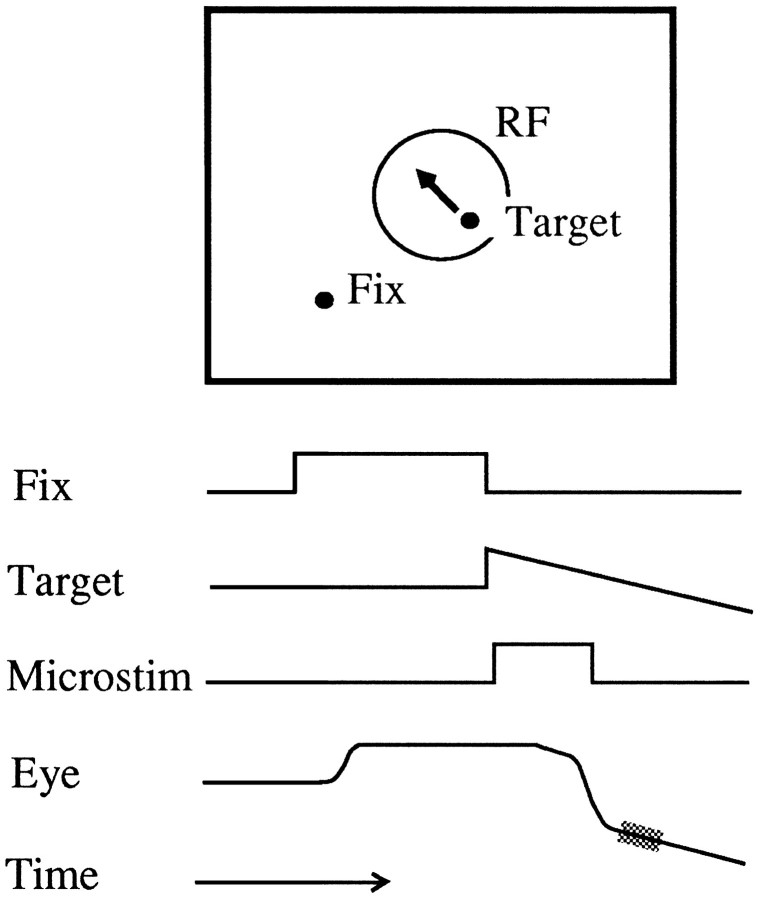Fig. 2.
Schematic illustration of the events in the step–ramp task in space (top) and time (bottom) for a typical experiment. A monkey first looked at a fixation point, and then a moving target appeared in the receptive field of the cells at the microstimulation site. The monkey made a saccade to the position of the target and used smooth pursuit to move the eyes at the same velocity as the target. On half of the trials, a train of microstimulation (Microstim) pulses was delivered from the time of target onset until the saccade to the target. The velocity of pursuit was measured during the period 20–60 msec after the saccade to the target (shaded region). The saccadic target velocity compensation was measured by computing the difference between the end point of the saccade and the starting position of the target and dividing by the time elapsed between target onset and saccade offset.

